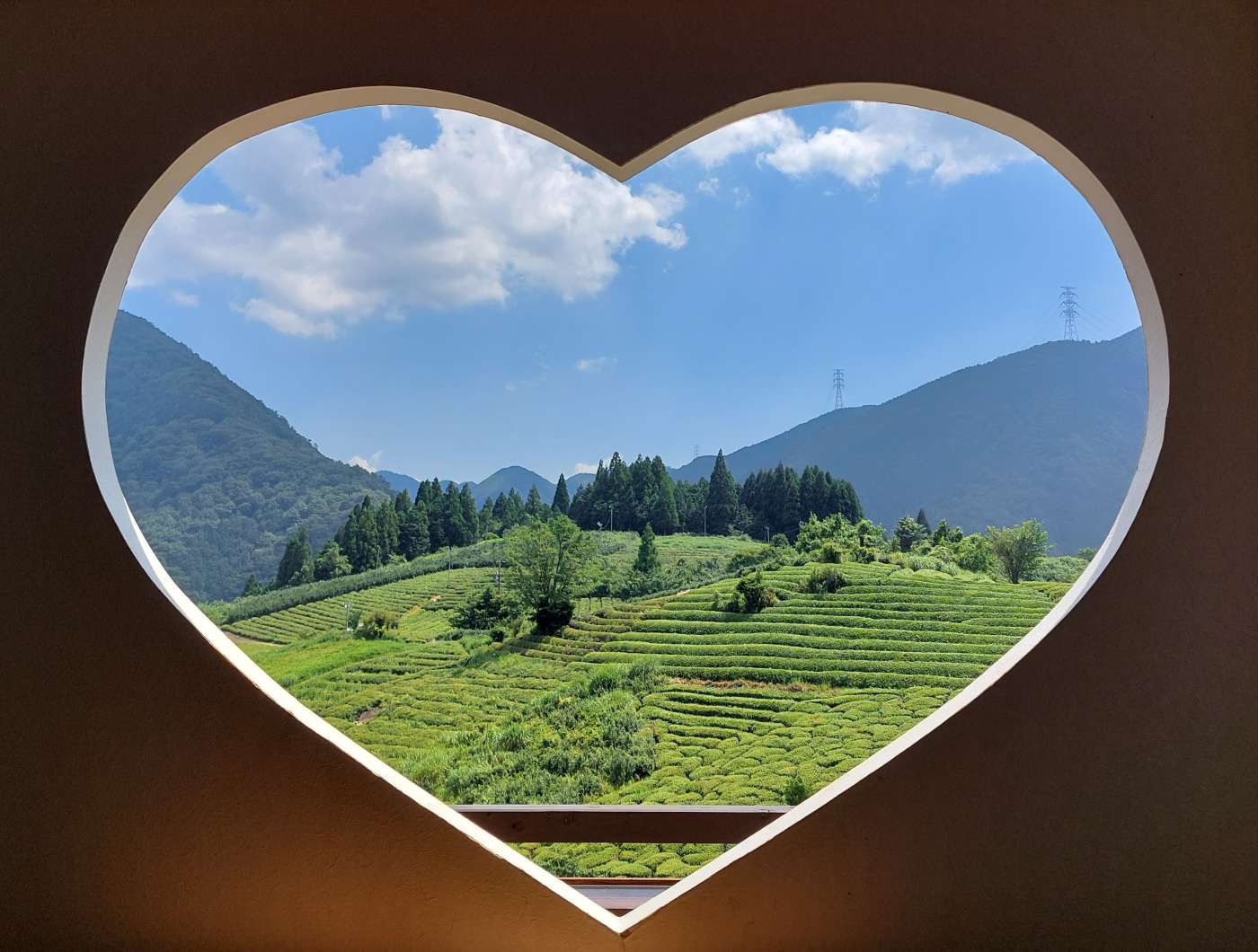
Photo credit: Heart Koya Café
February is the month for lovers!
Like Christmas and Halloween, Valentine’s Day is another global festivity that Japan has taken fully to heart. And despite some unique local twists on the occasion that include a focus on gifting by women on February 14, followed by reciprocal offerings exactly a month later on White Day, the universal symbol of love retains its central place. Follow us on a tour of some of Japan’s heart-shaped tourist spots, all of which are perfect for a romantic photo opportunity!
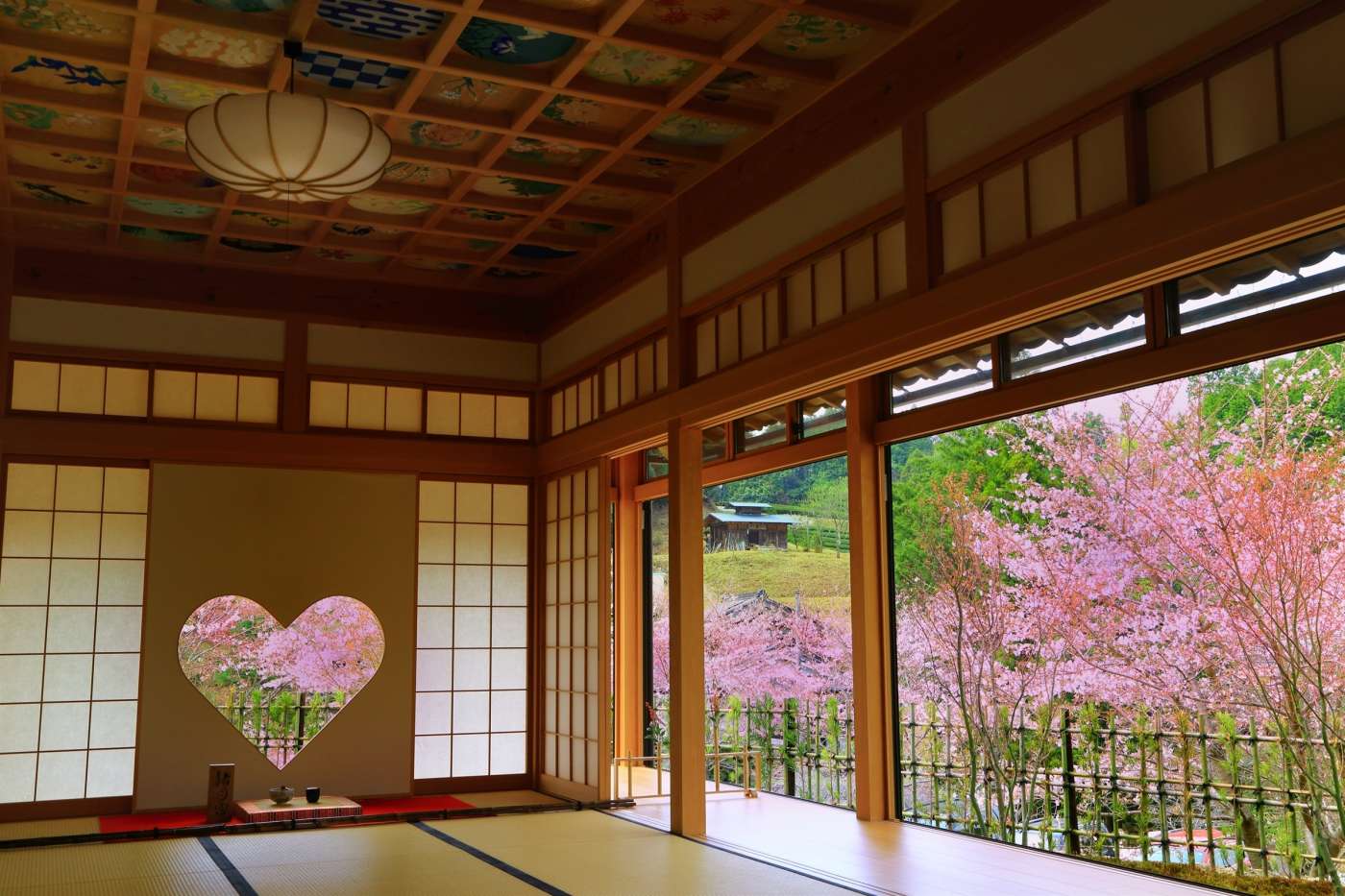
The heart-shaped inome window at Kyoto’s Shojuin temple provides a view of the changing seasons.
A heartfelt view of the changing seasons at Shojuin, Kyoto
One heart-shaped attraction whose appeal extends long beyond February and March, is the unique spin on a traditional inome (boar’s eye) window at Kyoto’s Shojuin. This feature of the eight century-old temple affords a view that changes with the seasons, from spring cherry blossoms to lush summer greenery, fiery autumn leaves, and winter snow.
Though perhaps unintended, the design also dovetails nicely with Shojuin’s other longstanding draw, a bronze statue by Kamakura period (1185–1333) master Kaikei, depicting the Buddhist Divinity Fudo Myo-o (also known as Acala), who, despite his fearsome appearance, is said to reside in the hearts of all sentient beings.

Kamigare Tea Plantation is known as Gifu’s Machu Picchu.
Photo credit: Alpsdake, CC BY-SA 4.0, via Wikimedia Commons
Heavenly scenery at the Machu Picchu of Gifu (Kamigare Tea Plantation)
A similar concept can be found in Gifu Prefecture, at Kamigare Tea Plantation. The glorious panoramas afforded by this 500-year-old agricultural marvel, with its picturesque terraced slopes surrounded by the mountainous scenery of the Ibi region, have earned nicknames including “Gifu’s Macchu Picchu,” and “tea plantation of the heavens.”
And as if that wasn’t enough, these stunning views are injected with a further dose of romance when framed by the cardioid portal window of Heart Koya Café. Here, too, you can savor seasonal vistas and enjoy a tempting range of green tea-based desserts and beverages, before heading off to explore the area courtesy of the community bikeshare service.
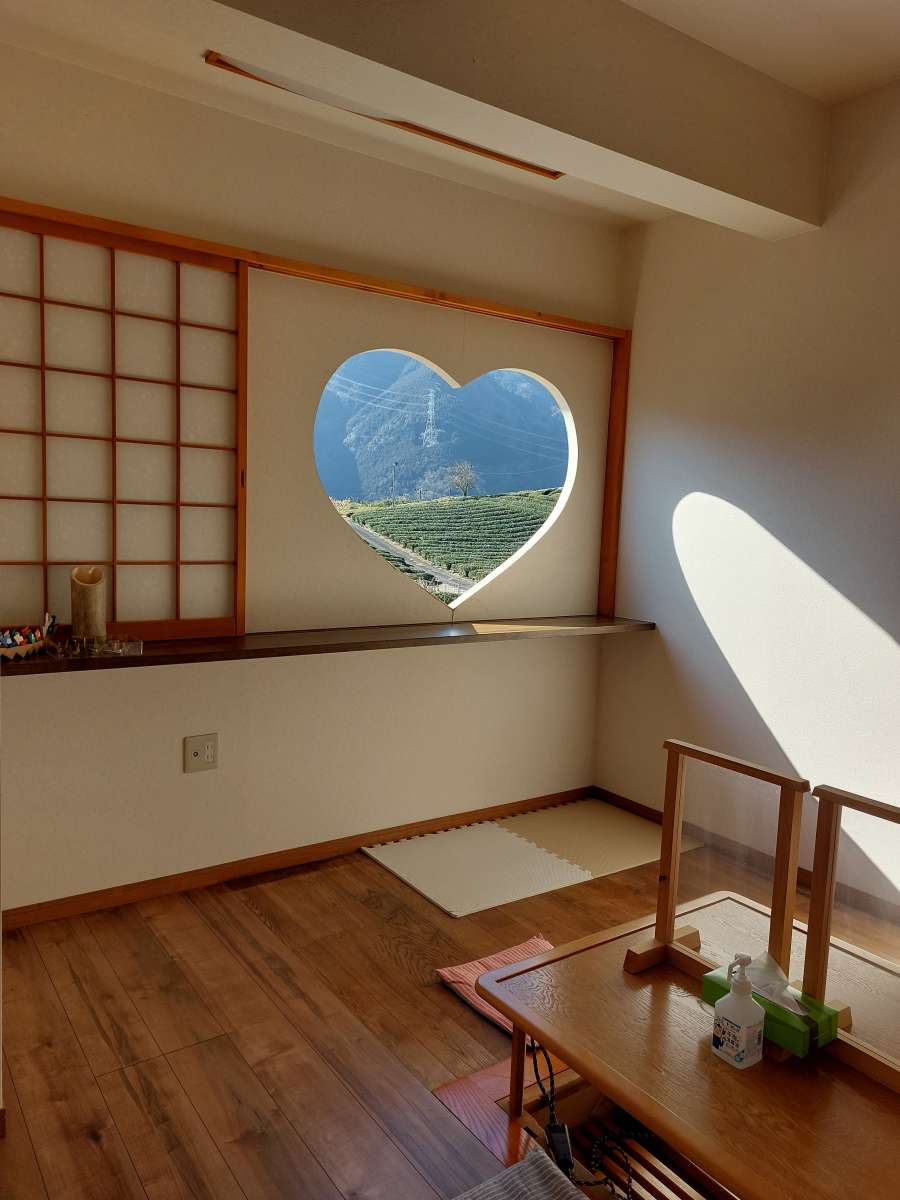
Visitors to Heart Koya Café can savor the view while enjoying green tea-based refreshments in a traditional-style tearoom.
Photo credit: Heart Koya Café
Find your heart at Wilson’s Stump in Kagoshima
While it may not have the most romantic-sounding moniker, the next stop on our archipelago-wide love train is located in the World Heritage-recognized forests of Yakushima, Kagoshima Prefecture.
Named for botanist Ernest Henry Wilson (1876–1930), Wilson’s Stump is the hollow remnant of an enormous (13.8 meters in circumference) cedar tree, reputedly felled on the order of reforming samurai lord Toyotomi Hideyoshi (1537–1598) for use in the construction of Kyoto’s Hoko-ji temple.
Climbing up and over the open root system, visitors find themselves in a surprisingly spacious chamber, complete with a small Shinto altar. And, looking upwards, the mouth of the stump provides a breathtaking, heart-shaped window on the tree canopy and sky above.

Casting your eyes upwards from the inside of Wilson’s Stump reveals a heart-shaped window on the heavens.
Photo credit: Yakushima Town Office
Naturally formed love at Hakusan Domon in Kochi
Next, we zoom Cupid’s arrow-like to the southern tip of Kochi Prefecture to check out another swoonworthy natural marvel. At 16 meters high and 17 meters wide, Hakusan Domon is considered one of Japan’s largest sea arches.
But what earns the site’s inclusion here is the way natural processes of tidal erosion have produced a strikingly heart-like outline, cementing its modern reputation as a power spot for lovers.
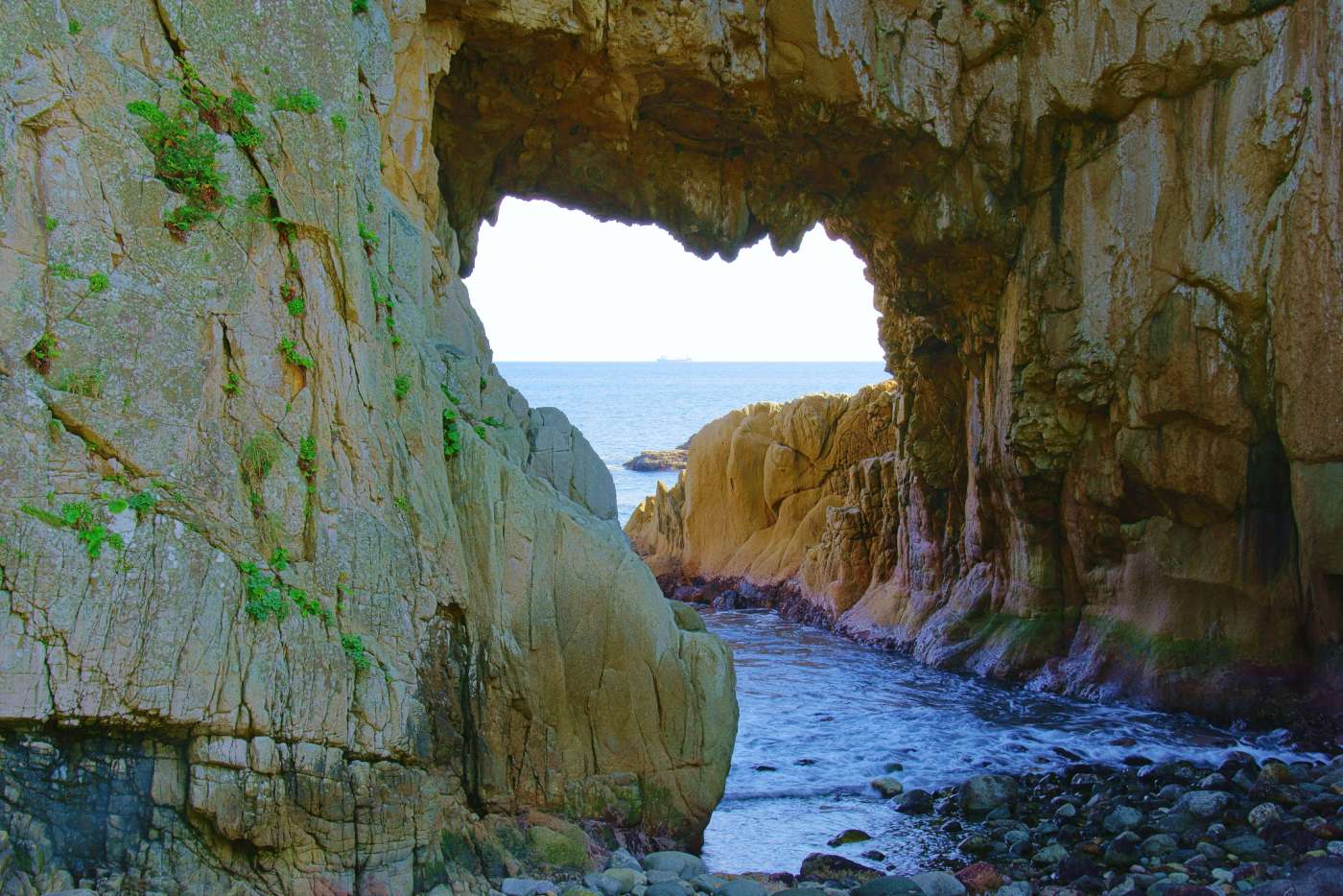
The heart-like outline of Kochi’s Hakusan Domon was produced by natural processes of erosion.
A bird’s eye view of Hokkaido’s heart-shaped lake
Finally, let’s say goodbye to love (for now at least) at Lake Toyoni in Erimo, Hokkaido. Set amid the tree-covered slopes of the Hidaka Mountains, the distinctive shape calls to mind not only romance, but also, as per an alternative local nickname, Batei-ko (“Horseshoe Lake”), a common symbol of matrimony.
The beguiling reflection of the wooded shores in the glass-like surface of the water makes Lake Toyoni a rewarding spot to drop by on foot (via a short hike from the nearest parking lot). But to give the full birds-eye view, autumn 2019 saw love lift visitors up where they belonged, with special helicopter tours. It’s an initiative that hasn’t been repeated since due to the pandemic, but keep your eyes peeled in case of future updates regarding the return of a jaunt that is sure to set the heart fluttering!
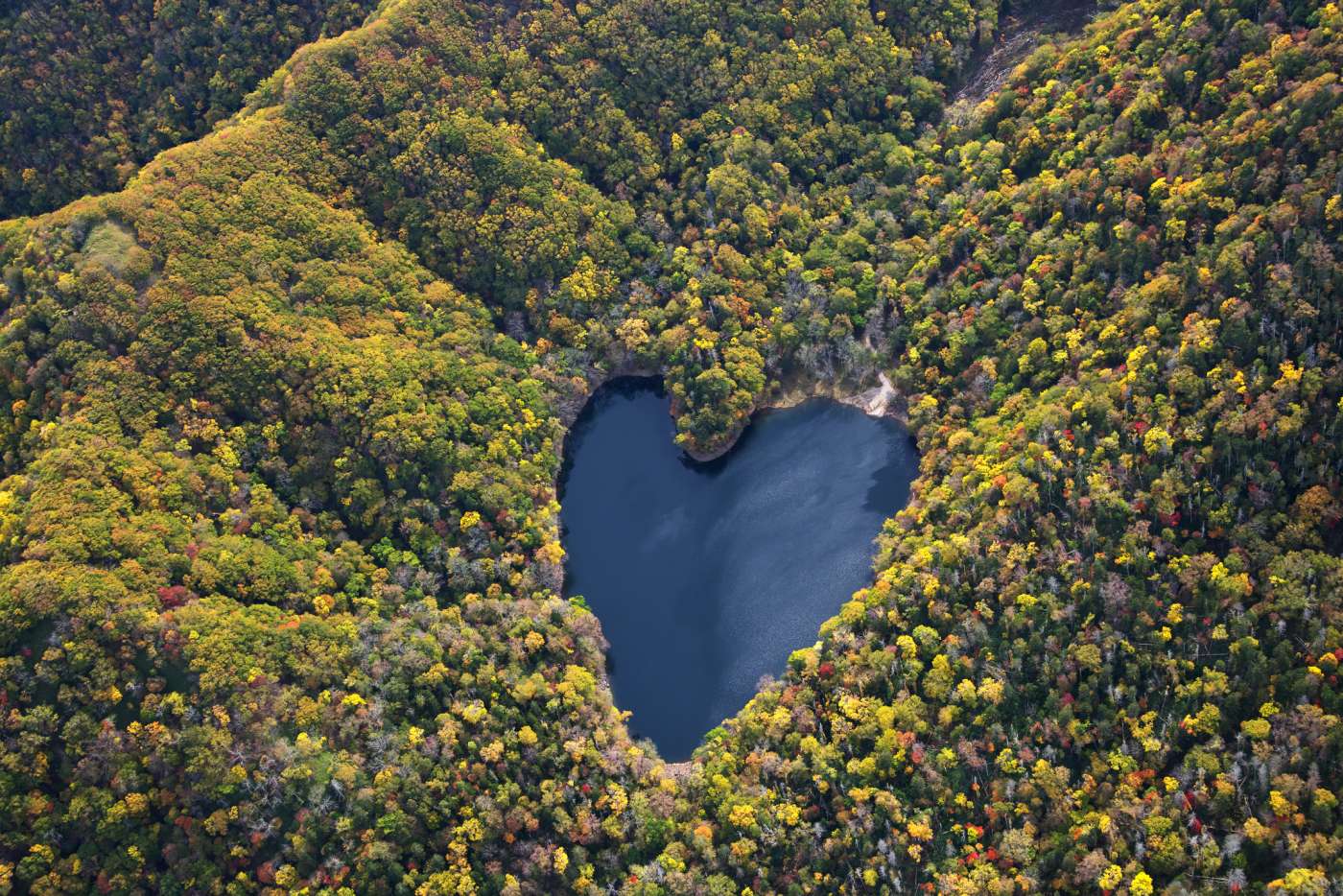
In 2019, special helicopter tours let visitors enjoy a breathtaking birds-eye view of Hokkaido’s Lake Toyoni.
-
About the author
Author: David McMahon
Profile: Drawn to Japan from his native UK in 2003 by a love of the country’s underground music, parallel to work as a translator and localization professional David McMahon has written on food, travel, sport, and culture for outlets including the Japan Times, Nippon.com, and NHK World.





















































